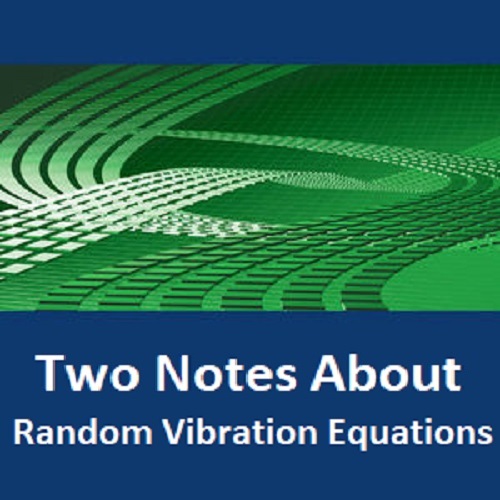Admin
مدير المنتدى


عدد المساهمات : 18996
التقييم : 35494
تاريخ التسجيل : 01/07/2009
الدولة : مصر
العمل : مدير منتدى هندسة الإنتاج والتصميم الميكانيكى
 |  موضوع: بحث بعنوان Two Notes About Random Vibration Equations موضوع: بحث بعنوان Two Notes About Random Vibration Equations  الإثنين 09 أغسطس 2021, 1:55 am الإثنين 09 أغسطس 2021, 1:55 am | |
| 
أخواني في الله
أحضرت لكم
بحث بعنوان
Two Notes About Random Vibration Equations
Reza Habibi
Department of Statistics
Central Bank of Iran, Tehran, Iran
Hamed Habibi
Department of Mechanics
KNT University, Tehran, Iran
Hamid Habibi
Department of Airworthiness
Civil Aviation Organization, Tehran, Iran

و المحتوى كما يلي :
Abstract
Two notes concerning the linear random vibration equations are
given. The first note studies the solution of equations under general
random excitation processes. The second one considers the measurement error problem.
Keywords: Excitation processes; Langevin equation; Measurement error;
Random vibration; Stochastic differential equation
Introduction. Random vibration equations appear in many examples of
applications. A spring mass system effected by a stochastic excitation process,
car vibrations on the road, body vibration of airplane in flight and pendulum with stochastic damping, all, are examples of random vibrated systems.
This topic has a history in engineering. Ozaki (1980) presented the non linear
time series models for non linear random vibrations. Ricciardi (1994) surveyed random vibration of a beam under moving load. Grue and Oksendal
(1997) considered stochastic forced oscillations of a spring mass system with
time dependent and stochastic damping. Iwankiewicz (2002) studied dynamic
response of non linear systems to random trains of non overlapping pulses.
Iwankiewicz and Sotera (2004) considered non linear oscillator under random
renewal driven trains of impulses. Henderson and Plaschko (2006) studied a stochastic pendulum with stochastic excitation and damping forces. Linear
random vibrations constitute a rich family for analyzing the mechanical phenomena, for example, Allen (2007) surveyed a single degree of freedom spring
mass system with a random excitation process.
Stochastic differential equations (SDE) are valuable tools for analyzing the
random vibration observations. There are a lot of good literatures for analyzing
SDE’s, see Kloeden and Platen (1999), Oksendal (2000) and Kutoyants (2004)
among the others. The SDE has been applied to model phenomena in other
fields of engineering, for example, it is used to model the fatigue damage of
materials or fluid mechanical turbulence (see Henderson and Plaschko, 2006).
These are not the purpose of the current paper.
Linear random vibrations are supposed to follow the stochastic linear differential equation
x¨t + αx˙ t + βxt = ft,
where xt denotes displacement, α is damping term, β a real constant. The ft
is stochastic excitation process. For example, in one degree of freedom spring
mass system, we have
mx¨t + bx˙ t + kxt = vft,
where m, b and k are the mass, damping coefficient and spring constant, respectively. Parameter v2 is the expectation of squared momentum (v > 0). In
this case, ftdt = dWt where Wt stands for Wiener process. This equation is a
form of stochastic Lienard equation see Allen (2007) pages 156-158.
The general form of vector SDE’s in this paper is given by
dz∗
t = A∗z∗ tdt + B∗dUt∗,
where z∗
t is a random vector, A∗ and B∗ are two matrices, and Ut∗ is a suitable
(vector) stochastic process. In all cases, assuming z0 = 0, following Henderson
and Plaschko (2006), the solution is given by
z∗
t = 0t eA∗(t−s)B∗dUs∗.
In this paper, we consider two notes about linear random vibration equations.
The first notes relates to generalizations of ft which is contained in section 2.
In section 3, we study the measurement error problem in random vibration observations.
كلمة سر فك الضغط : books-world.net
The Unzip Password : books-world.net
أتمنى أن تستفيدوا من محتوى الموضوع وأن ينال إعجابكم
رابط من موقع عالم الكتب لتنزيل بحث بعنوان Two Notes About Random Vibration Equations
رابط مباشر لتنزيل بحث بعنوان Two Notes About Random Vibration Equations 
|
|







